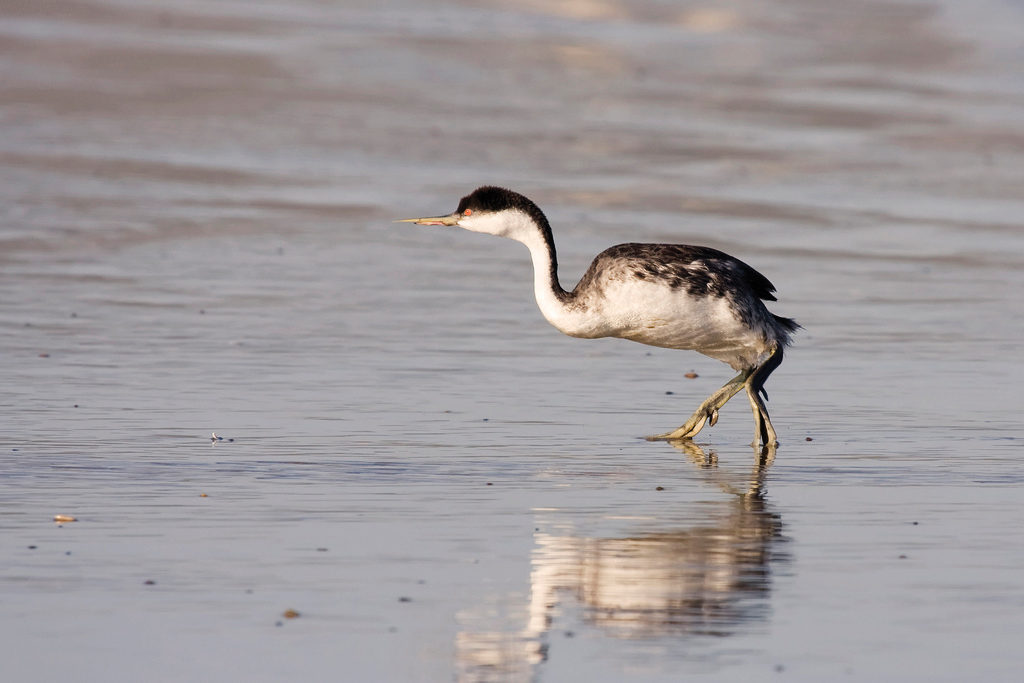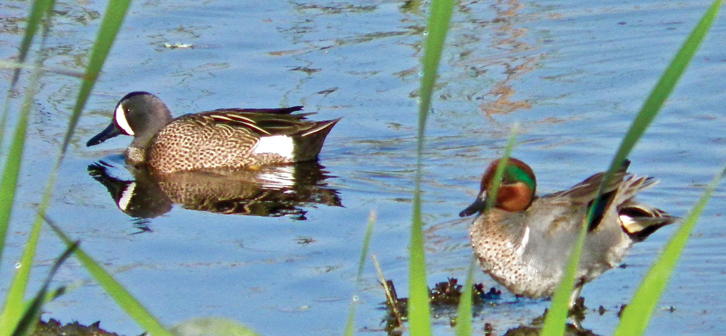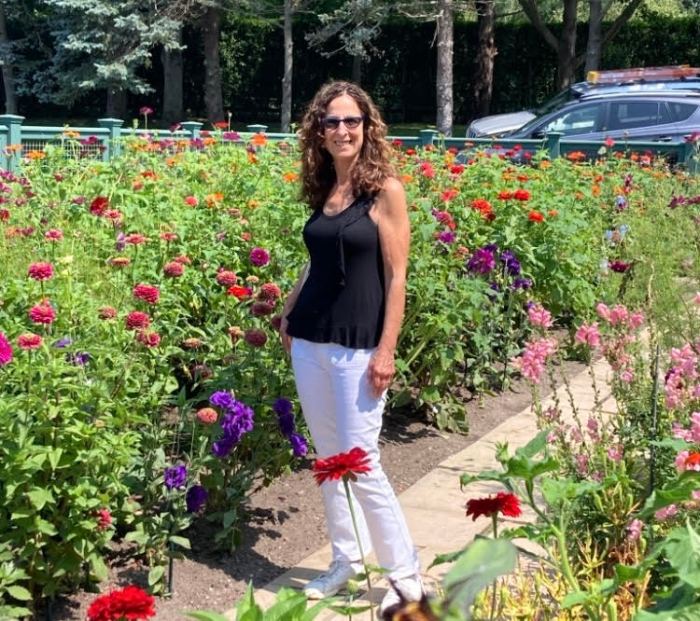
At 7:30 a.m. on the day after the inauguration, I’ve been awake more than two hours, have driven 20 miles in the dark with a slowly lightening horizon followed by dense fog that shrouded a birding hot spot called the Celery Fields. With about 15 other early birders, I’m sitting in the Sarasota Audubon Society’s nature center listening to a lecture on ducks and grebes.
The Class
The group is a geographical potpourri: Britain, Milwaukee, Kentucky, Sarasota, North Carolina, Maryland, Southern California and Indiana. The lecturer, Barry Rossheim, is originally from Long Island and the program chair of the Sarasota Audubon Society, Kathryn Young, formerly from Minnesota. There’s a 12-year-old boy, Cooper, from Charlotte, who may know more than anyone in the class. There’s a couple who’d been students in my birding class a few years ago. Christine, who I’m sitting next to, had taught religion at Canterbury Christ Church University in the United Kingdom.
I’m weak on ducks, which are confusing and I know less about grebes, which resemble ducks. Rossheim, a zoologist, who has taught high school zoology for 37 years, knows where to start with people who need to learn the basics. I appreciate his easy going informative style. Grebes are freshwater diving birds whose webbing isn’t between the toes, but on them. According to the Birdwatcher’s General Store website, “A grebe’s foot has three long toes that look like they have been smashed flat with a hammer or stepped on by Rush Limbaugh. Instead of one big web, a grebe has three little paddles on each foot.” Underwater swimmers, they can go long and far. Old-time hunters called pied-billed grebes, which are at the Celery Fields, “hell divers.“
Ducks have webbing between the toes and are either dabbling ducks or deep sea diving ducks. They have nostrils at the base of their bills. Rossheim discusses the blue-winged teal, green-winged teal, shovelers and wood ducks showing his stunningly clear pictures that identify these ducks. At some point he mentions that ducks make good subjects to photograph because of their reflections in the water.
A Passion For Birding
It’s not only clear that he knows local birds but shows us images he’s taken of ones in Australia and Tanzania, where he’s also birded. In discussing an incident in Tanzania where a harpy eagle took a flamingo, it’s clear that he loves what he does. That evokes in me a sense of the “romance” that my wife and I experienced several years ago birding in Africa.
There’s a discussion of “muttled ducks,” which are a hybrid of mallards and mottled ducks, a southern species. While the two were once geographically separated, they are no longer. The mottled ducks gene pool is being destroyed because of interspecies breeding. It seems as if the female mottled ducks go for the green headed male mallards. When Rossheim showed pictures of two ducks and asked if they were mottled or muddled, Young answers “muttled.” When Rossheim asks her why, using his pointer with a disclaimer that she isn’t a teacher, points out exactly and clearly why. That’s when I start paying attention to her.

In The field
At a nearby lake there’s more than ducks. There are four sandhill cranes, tall with gray bodies and small red capped head and ninety white pelicans, huge birds with enormous yellow/orange bills. I spot what I believe to be an immature little blue heron in the muck which in this faze is all white. However, the strong sun makes its bill look too dark to be one. However, Young, who wears a wide brimmed sun visor, says that it is. She’s a lean woman, who moves fast and exudes infectious enthusiasm. A down to earth trip leader, she explains details of birds learned from years of experience and, it seems, miles of walking. Her voice, which rings of expertise, is high, nasal and distinctive. She wishes I’d say she has a Minnesota accent. OK, she does but when she talks, I listen.
Looking over her shoulder and through her high-powered birding scope, I see a lesser yellowlegs, a sandpiper and three long-billed dowitchers, a life bird for me. There is a loggerhead shrike called the “butcher bird” across the road on barbed wire, where they sometimes impale insects and a few on our side atop bushes. Also across the road are fenced in cattle with lots of cattle egrets near them. This is a party, birds are everywhere.
At the Celery Fields there are several species of duck: green winged teal, blue winged teal and a gadwall, which is rare here. There’s a parade of other birds: a green heron in the bullrushes, a kingfisher, which Rossheim spots with the naked eye some 200-yards away, the American bittern, which holds its neck high and a beautiful female red-breasted merganser. Spotting a lumbering eagle, Young says, “an eagle, there’s an eagle.” If Young were a scientist, she’d be looking into the future. Leaving the site there’s a mass exodus of great egrets and pink roseate spoonbills from one side of a walkway to another. Spectacular.
Afterward, juiced to the gills, I sit at a picnic bench having an early lunch knowing more about ducks and grebes because of Rossheim and Young. A half hour later, in downtown Sarasota, traffic is choked with cars. People are walking with signs of various sorts. It is all part of the Women’s March on Washington, the day after yesterday’s inauguration. Marchers, men and women, with signs and a few with American flags are stretched more than half way across the long John Ringling Bridge. Two men with cameras wearing bandannas on their heads, are standing on the divider, leaning over to photograph a long line of marchers going towards the bridge’s apex. It’s like the Civil Rights marches of the 1960s. I’m watching history in the making. This is truly impressive.
































